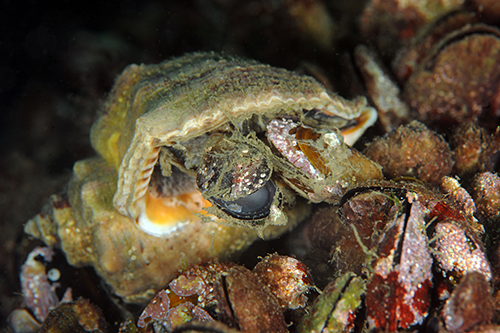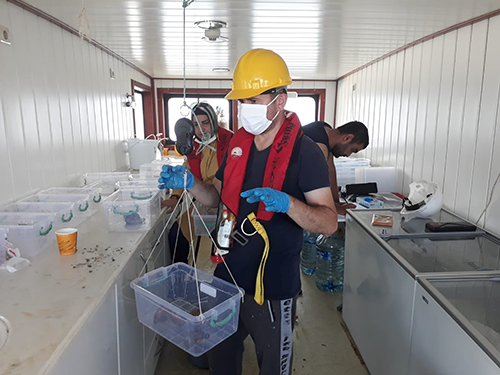Launch of a scientific survey-at-sea for rapa whelk in the Black Sea

Initially considered a marine pest, rapa whelk from the Black Sea is now exported globally and represents multimillion dollar revenues for the region’s riparian countries. As it is currently fished close to its sustainable limit, Bulgaria, Georgia, Romania, Turkey and Ukraine have joined forces to launch a comprehensive survey of the species in the Black Sea.
Under the framework of the General Fisheries Commission of the Mediterranean (GFCM) and the BlackSea4Fish project, this survey will mark the first step towards the rational management of this important resource for the region. After completing over 300 hauls, the survey will provide an estimate of the distribution, abundance, size and age structure of the rapa whelk population in the Black Sea.
Rapa whelk (Rapana venosa), originally from the western Pacific, appeared in the Black Sea for the first time in 1946 in Novorossiysk Bay (Russia), one of the sea’s busiest commercial, where it is thought to have been transported via biofouling. Over the following decades, while other benthic species suffered from a deterioration in ecological conditions in the region, the rapa whelk population continued to prosper thanks to its high fecundity and broad tolerance to salinity, water pollution and oxygen deficiency. Its predatory nature, a lack of competition from other predatory gastropods and an abundance of potential prey species has further contributed to facilitating its successful establishment in the Black Sea. Meanwhile, in parallel with the expansion of rapa whelk, sharp declines were noted in other commercial mollusc species on which Rapa whelk feeds, e.g. oysters, scallops, clams and mussels. Concurrently, since the early 1980s, a profitable market for the species emerged in the Far East, with South Korea, Japan and, China paying high prices for frozen and processed Rapa whelk meat.

Rapa whelk predating upon mussels ©Tahsin Cevlan
In 2018, GFCM assessments revealed that rapa whelk is now being harvested close to maximum sustainable yield (MSY). This situation is a remarkable example illustrating the challenges in the management of non-indigenous species (NIS): should the biomass of the species be kept as low as possible to reduce the damage to the ecosystem, or should it be kept at a level that can achieve maximum sustainable yield from an economically important resource?
“In order to gain more information on the species, a research programme was established through a Recommendation GFCM/42/2018/9”, explains the coordinator of the BlackSea4Fish project, Nazli Demirel. “In response to this, for the first time in the Black Sea, countries have been collaborating closely to establish a common protocol to conduct a comprehensive scientific survey-at-sea that will allow a holistic management of rapa whelk in the region.”

Recording data from a rapa whelk survey in Turkey ©Sumae
The Central Fisheries Research Institute (SUMAE) of the Turkish Ministry of Agriculture and Forestry will be the first institution of six to implement the survey, starting today, 31 August 2020. It will be followed by the Institute of Fish Resources (IFR), National Institute for Marine Research and Development “Grigore Antipa” (NIMRD), National Environmental Agency (NEA) under the Ministry of Environmental Protection and Agriculture of Georgia, Ukraine and Istanbul University (Turkey). These surveys will then be conducted twice a year in order to understand the variations of this resource over time (annual and seasonal) and space.
Learn more about the regional research programme for rapa whelk fisheries in the Black Sea.
